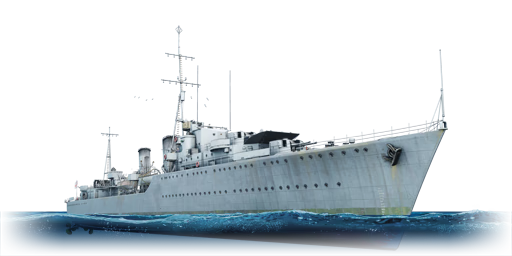HMS Eskimo (F75) was a member of the Tribal-class destroyers. Larger and more heavily armed than the previous I class, HMS Eskimo was designed to counter the large destroyers being built abroad and to increase the firepower of the destroyers already in service. Throughout World War II, HMS Eskimo saw action in Burma, the English Channel, Norway, and the Mediterranean. HMS Eskimo served as a hospital ship and a headquarters ship following the war. In 1949, it was finally used as a practice target before being scrapped.
Introduced in Update 1.83 "Masters of the Sea", HMS Eskimo excels best as a gunnery ship. Even at a great distance, HMS Eskimo can easily defeat other destroyers owing to the enormous calibre and accuracy of its main armament. Furthermore, the front of HMS Eskimo houses the majority of its main armament. This means that HMS Eskimo can inflict significant damage while maintaining a small profile. This, along with its quick speed and sufficient auxiliary armament, can make HMS Eskimo a great support/escort ship, even in high-ranked battles.














